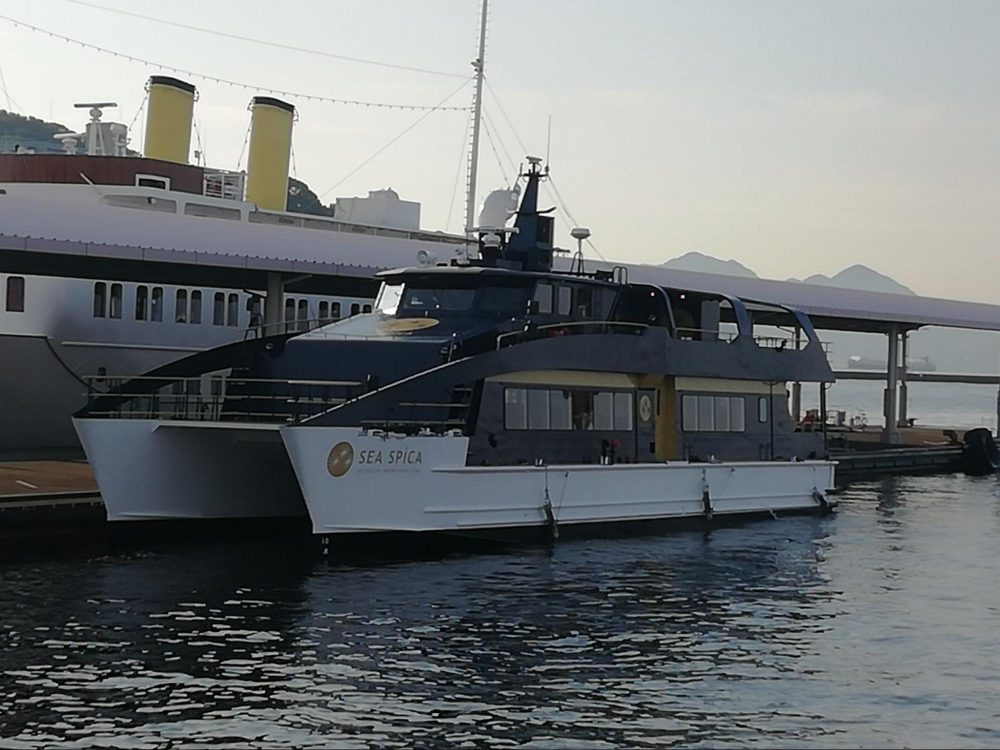100 Stories
CRUISING THE SETO INLAND SEA – Beautiful Year Round
There are many things I truly love about Hiroshima. Most of them are covered quite thoroughly here on this site. But one last built-in love of mine about Hiroshima is the water. A town with six rivers running through it, while also sitting on the coast with multiple islands off shore; it’s a paradise of peace for those of you, like me, who find something calming and soothing for the soul about water. So why not include a day-cruise in your itinerary as you explore Hiroshima?
You’ll find stories elsewhere on here about Rabbit Island, Ikuchi Island, and a host of others. What I’d like to tell you about today is the Sea Spica cruise ship, which will allow you to experience several of those islands, in a half-day or full-day, while also just enjoying the beauty of the open water that is Hiroshima’s Seto Inland Sea. There is a little bit of something for everyone on this cruise, making it a great family outing as well.

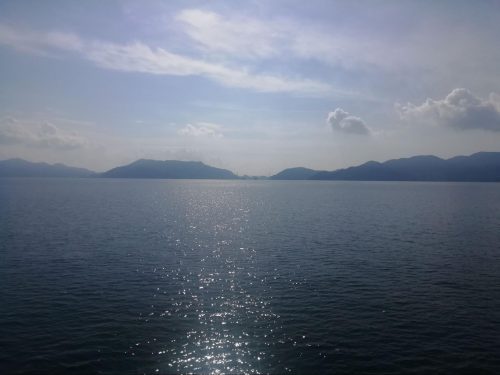
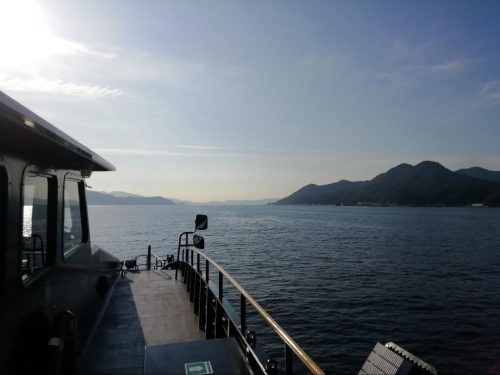
THE SEA SPICA
Setonaikaisen Cruise Company runs the Shimatabi Line (literally, island tour line), a day-cruise on the Inland Sea in a beautifully designed (specifically for this cruise purpose) small ship called the Sea Spica. This 25-meter long vessel has seats for 90 passengers in its cabin, though bookings are usually limited to less than that to avoid crowding.
Operating since 2020, the boat is a deep, dark blue and white mix, to represent the sea and the clouds, with gold trim to represent the beautiful sunsets of the Inland Sea. It is named Spica, after the brightest star in the constellation of Virgo, called the Pearl Star in Japanese. The motto of the boat is that customers can have a free and comfortable journey while shining pale and beautiful in the Seto Inland Sea.
The inner cabin has lush designs, with two wide screen monitors at the front, which show the boat’s progress on a map in the same way that overseas air flights do. The screens are fronted by seven rows of seats. There is then a table space in the middle that a family could book. Then there are two more spacious rows to the aft that have mini tables for couples or families. The main cabin also houses a small gift shop counter space.
The great thrill of the design of the boat, however, is the upper deck. The day I cruised the vast majority of the passengers were rarely in their assigned cabin seats. Everyone was going upper deck. The middle of the deck is taken up by a truly unique sofa composed of interlocking circles to represent the many islands of the Inland Sea. Meanwhile the rails on both sides and at the stern have bolted down deck chairs facing out, offering glorious views the whole journey. “Move your feet, lose your seat” was definitely the name of the game as passengers all spent time just enjoying time on that upper deck.
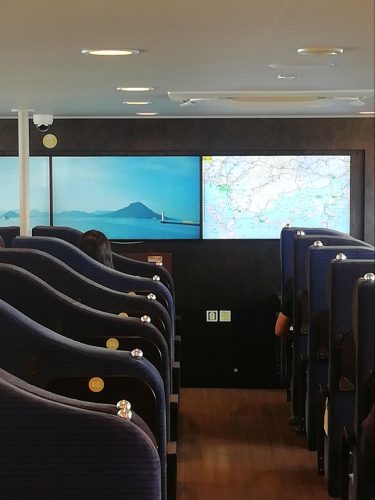
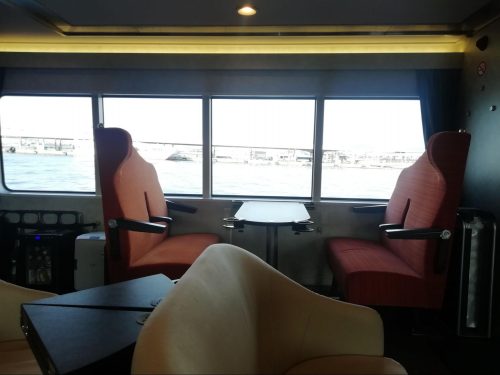
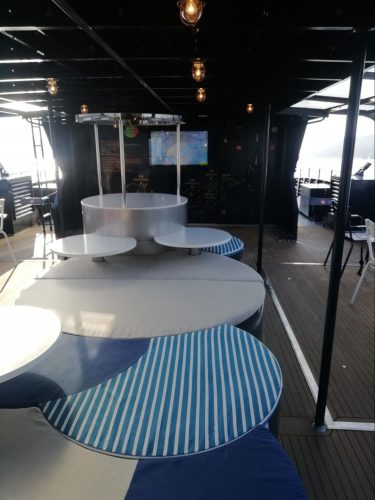
GOING EAST OR GOING WEST
The cruise offers a lot more than just a boat ride, however. A well-timed itinerary plots out an eastbound “A” course for the morning, and a returning westbound “B” course for the afternoon. I checked with the Line and very few passengers actually do the full round trip (which would double the cost). The large majority do, as I did, the cruise in either direction, and rely on the bullet train or some other means of return. Actually, many had suitcases as well, indicating overnight plans in conjunction with the trip. So while there is some overlap in the two courses, allow me to spell out the differences as well.
The eastbound cruise begins at Hiroshima port in the morning, an 8:30 departure, reaching the city of Mihara at 1:15. The westbound cruise immediately sets out in return, departing Mihara at 1:25, to arrive back in Hiroshima at 6 p.m. Both directions include several stops for tourism, along the way, offering two opportunities in each direction to disembark and do some island sightseeing. The boat offered a few packages of discount coupons to be used in various locations related to the journey, but that information was all in Japanese.
Outside of the opposite departure points, there is really only one major difference between the two routes. The eastbound course stops at Shimo-Kamagari Island for one hour, while the westbound course stops at Mitarai village of Osaki-Shimo Island for one hour. Other than timing, the rest of the itinerary is the same, just reversed.
The eastbound route departs in the morning, and goes first to Kure city’s port, and then a slow and long tour of the Kure shipyards. For many of the passengers this seemed quite the enthralling part of the tour, as our cruiser passed close to dozens of huge freighters in the process of construction, and then also quite a few ships belonging to the Japan Self-Defense Forces. There was quite a bit of scrambling for window space (being the beginning of our tour, most had not discovered the upper deck yet) for photographs, as we slowly cruised past ship after ship. This might have been more interesting for me as well, but the entire explanation of all that we were seeing (including one ship near completion so huge it defies my ability to create a metaphor) was in a never-ending stream of Japanese language only, piped through speakers. Difficult to hear, and full of technical jargon on ship size and whatnot, I personally tuned out and waited for the open sea. I was on the ship to see natural beauty, after all. That said, if you have even mild interest in extremely large ocean-going vessels, this part of the journey will fascinate.
Speaking of the self-defense force ships, we passed quite a few on the open sea, as well, including several submarines cruising at surface level. All involved were quite thrilled at these passings, and the sailors on deck waved back rather cheerfully. This departure from staid Japanese cultural norms was a pleasant sight, and the submarines up close were impressive, too.

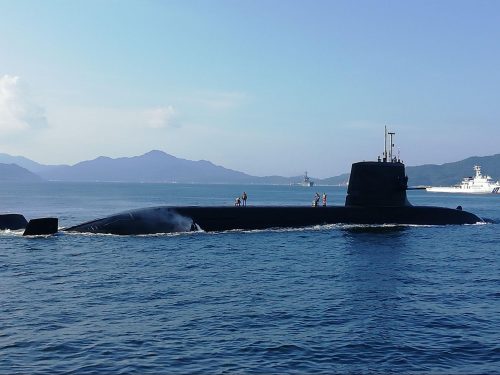
Next on the route was to pass a narrow straight and a rather famous Crimson Bridge. According to the provided pamphlets, the park next to the bridge is home to 2,300 Cherry trees and 8,300 Azaleas, which means if you do this voyage in the spring the blossoms are an amazing sight. Passing under the bridge we then moved to our first stop, the unique location to the eastbound route – Shimo-Kamagari Island. We arrived at 9:55, an hour and a half into our journey, and we were given 70 minutes to explore several sites near the port. I’ll describe it in a bit more detail below.

Back on the ship, we cruised past two other islands, which we received copious dialogue about, before arriving at the internationally famous Okunoshima, or, colloquially, Rabbit Island. Described in full detail elsewhere on this site, if you don’t really have time to give the island it’s full due, but are curious to see it, this is a wonderful opportunity to get a taste. We stopped on Rabbit Island for 30 minutes, and the crew sold 100-yen bags of rabbit food to any who had not brought something from home. The ship docks at a minor pier near the island’s beach, poison gas museum, and culture center. There are many rabbits nearby – which is true of anywhere on the island – but if you just want to see a lovely view, or learn a little war-time history, those are also possible in the limited time. But I highly recommend feeding the rabbits. There is something quite uplifting about dropping some food and seeing several rabbits come rushing to your feet. Some great photos, too, if you like cute animals.
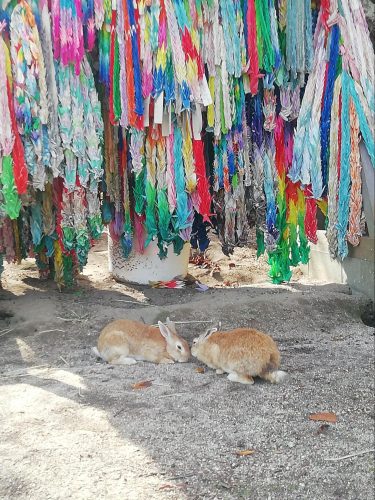

From there, it was a stop at Setoda Port, where many of the passengers departed with their suitcases, planning to make the excursion much more than just a boat ride. Of note, the white marble garden of Ikuchijima is a 10 minute walk from this port. The rest of us cruised the final 20 minutes to Mihara, where the westbound passengers were already lined up and waiting. According to the itinerary, the westbound journey goes to Rabbit Island first, for the same 30 minutes, goes to Osaki-Shimo Island next, with a 60-minute stop, passes under the Crimson Bridge, does the slow sightseeing at the Kure Shipyard, and then reaches Hiroshima Port at 6 p.m.
EAST VS. WEST – SHIMO-KAMAGARI ISLAND VS. OSAKI-SHIMO ISLAND.
The eastbound departure is certainly far easier for anyone living in Hiroshima, assuming you are enough of a morning person that arriving at the port by 8:15 is not too oppressive. From Mihara Port it is a less than 10 minute walk to Mihara Station. If you are paying for the bullet train or have a rail pass, you can be on your way back to Hiroshima soon after. The budget option is to take the local JR train back. It’s much cheaper than the bullet train, and at 1 hour and 15 minutes, not too long a ride. The catch is that there is usually only one direct train an hour that goes all the way through, so you might, as I did, sit at the station for 45 minutes first. (You will not save any time by getting on a train that goes part of the distance. Once that train stops you’ll just be waiting for the next train, which will eventually be the same direct train from Mihara anyway).
While the eastbound is therefore easier for most, I’d really recommend flipping it. The Mihara-departing westbound run leaves at 1:25 p.m. This means you can leave Hiroshima at 12 if taking the bullet train, or 11 if taking the local, and still get to Mihara on time. Then you cruise back in the afternoon sun, and possibly into the sunset. You’ll see the shipyard around 5 p.m., which might mean it is well-lit, depending on time of year. Most importantly, though, for my money Osaki-Shimo Island tops Shimo-Kamagari Island, all other points being the same.
Shimo-Kamagari, our stop, is historically significant for housing Korean emissaries during Japan’s Edo Period (1603-1868). As such it earned UNESCO Memory of the World designation, and islanders hold an annual reenactment of the Korean delegation’s arrival every October. As interesting as that bit of history was, there just wasn’t much to actually see. There is a building dedicated to preserving the historical documents of that time, a collection of priceless ceramics, an art museum, though it didn’t seem focused on that same time period, and a garden that seemed to have some interesting statuary. All three of those locations require entrance fees not covered by the cost of your cruise ticket, however, and given the time constraint I personally passed on entering. Thus, this 70 minute stop consisted of a nice coastal walk, and the chance to buy some tangerines (the Inland Sea islands are famous for their citrus). For what it’s worth, my map also indicated there was an insect museum, as well, but I didn’t enter that either.
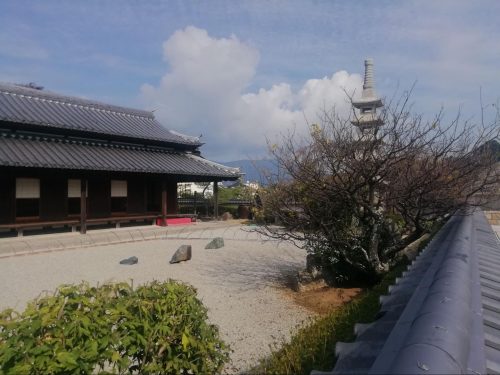
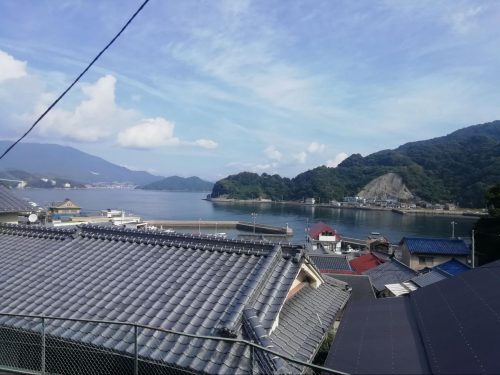
Mitarai, meanwhile, is located in such an off-shore isolated location, that while most of the rest of Japan went through post-war reconstruction and modernization, Mitarai was not developed in the slightest. As such, it received designation as a Historic Preservation District of Traditional Architecture, and also as a Japan Heritage Site. You’ll walk down narrow streets with building designs so old you’ll think you are on a movie set of a Samurai drama set centuries in the past. Without needing to enter anywhere there are still unique, if not exciting, views all over the town. Mitarai also had quite a risqué part of Japan’s history that I’d encourage you to read about. Let’s just say the many tea houses you will see were not actually famous for their tea. There are also two centuries-old shrines to be seen as well in your hour on the stop. While it’s just a short stop, and it’s just old buildings, the chance to feel transported in time makes this stop far more interesting and appealing than an art museum and some statues, at least for me, so if possible consider the westbound route.
FINAL TIDBITS
* There was no English offered at any time on the cruise, nor any attempt by the crew to be sure that I was understanding important information like when to return to the ship. That said, the timetable on my itinerary card was easy to understand, and they did know I speak Japanese so they might be more attentive to a non-resident foreigner if you wish such attentions.
* My favorite location on the entire ship were the four deck chairs at the stern of the upper deck. Watching the wake as the ship cruised at speed was enjoyable, as was being able to bask in the sunlight. Looking back at scenery instead of ahead to oncoming scenery wasn’t the greatest part, but in the end it’s the same natural beauty. But the real reason this was my favorite spot on the ship is that it is the only location with no loudspeaker. Which made it the only refuge on the ship from the nonstop narration of our onboard guide. I understood her talking so much during the shipyard portion of the cruise, but she kept up a constant stream of dialogue the entire journey. It even seemed she and other members of the crew were using the internet to get quick information about some of the Self-Defense Force ships we passed at open sea. Really, I have no idea what she was talking about in the end. I was just trying to drown her out so I could enjoy the scenery in more peace. So finding the silence of those aft chairs was golden for me.
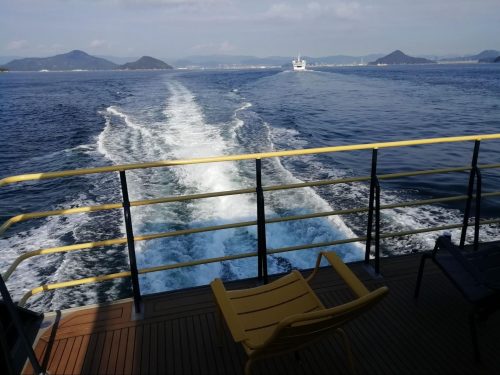
* There is a naval officer coat and hat on a hanger with a sign saying feel free to use for photo ops. Not a single passenger did, but I used a moment before most of the others had reboarded at one of our stops to take a photo in the cap at least. I offered a salute to my own brother, a veteran of the U.S. Navy.
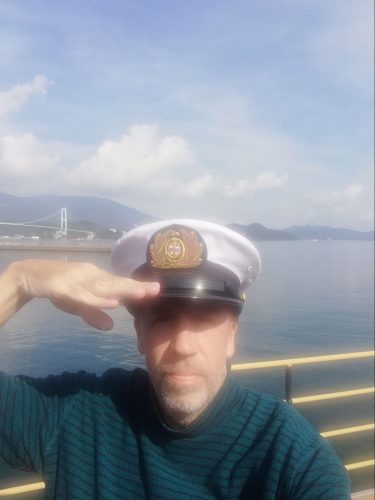
MOMENT OF JOY
I mentioned tangerines above. When we stopped at Shimo-Kamagari Island, there was one of those “now this is small island life in Japan” type of moments. There was a small table set up on the side of the road, with a sign saying 200 yen for tangerines. But there was nothing and no one around the table, and just a little decorated box for honor system payments. Honor system – not something that would work in a big city. I smiled as I dropped in my coins, and thought back fondly while eating some juicy tangerines on that aft chair back at the open sea. My moment of joy.
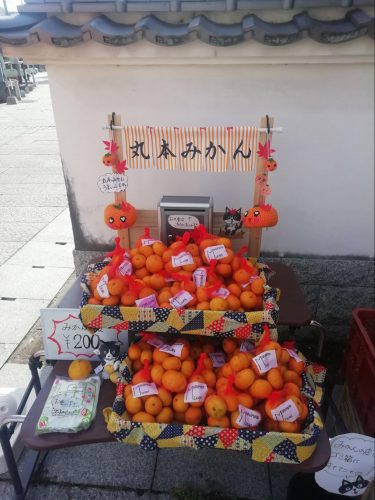
If you like to be at sea, if you are refreshed by water, if you want to see a lot of the natural beauty of coastal Hiroshima, and have a touch of history thrown in as well, I highly recommend you try a day cruise on the Sea Spica. Blossoms in the spring, gorgeous sunshine and the open breeze in the summer, and fall foliage in the autumn — something beautiful to be seen any time you go. The cruise runs from April to December every year, Fridays to Mondays. See you at sea.

